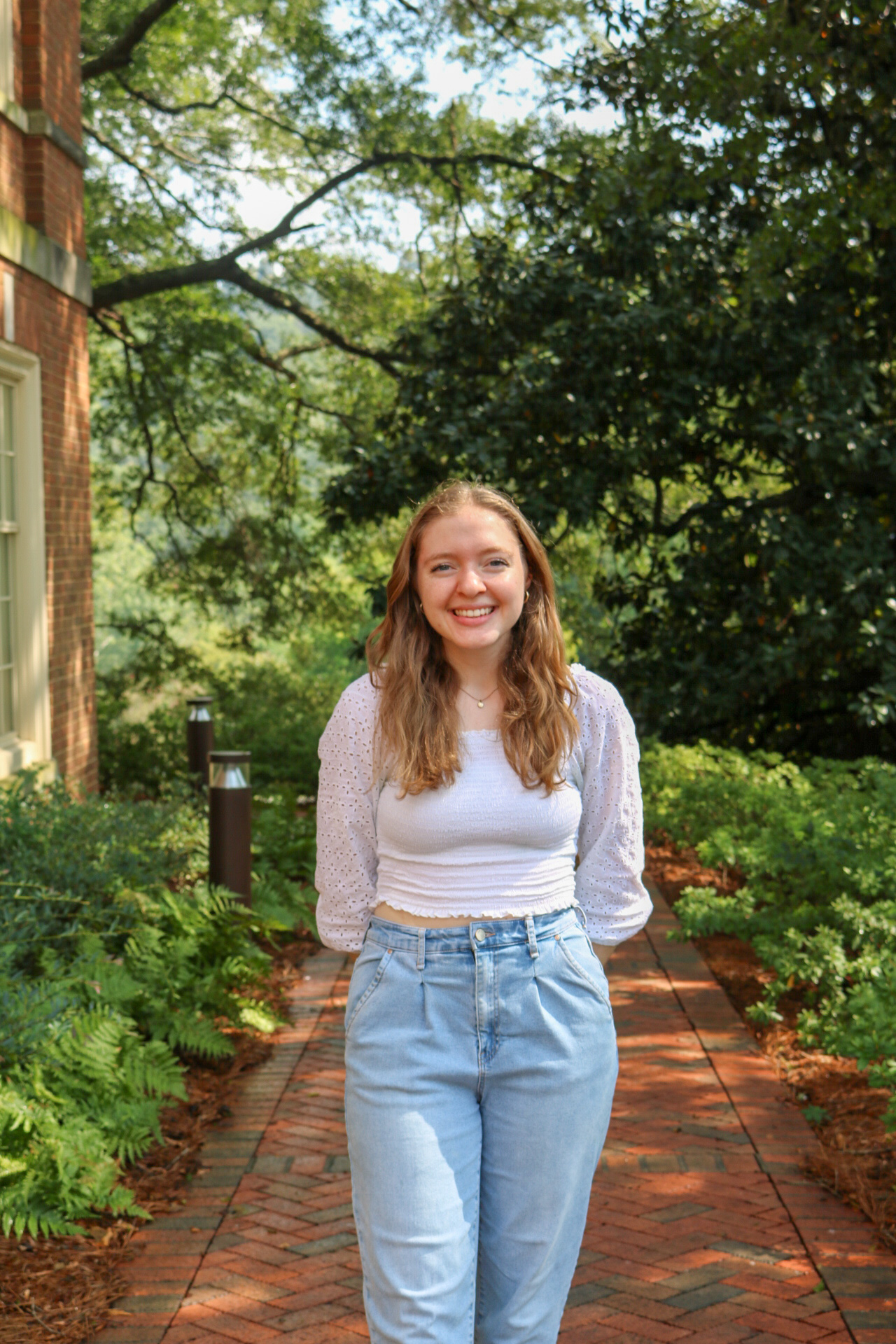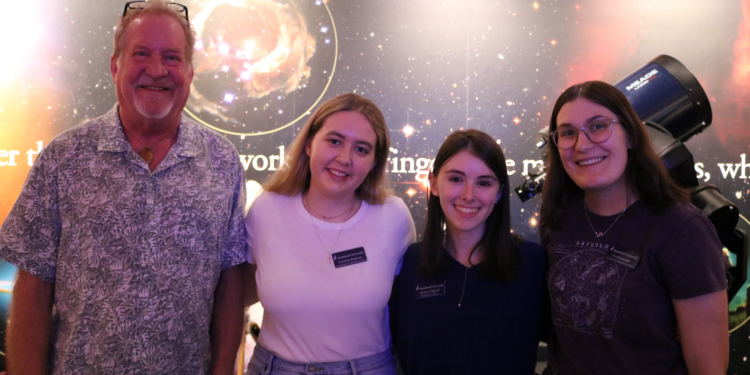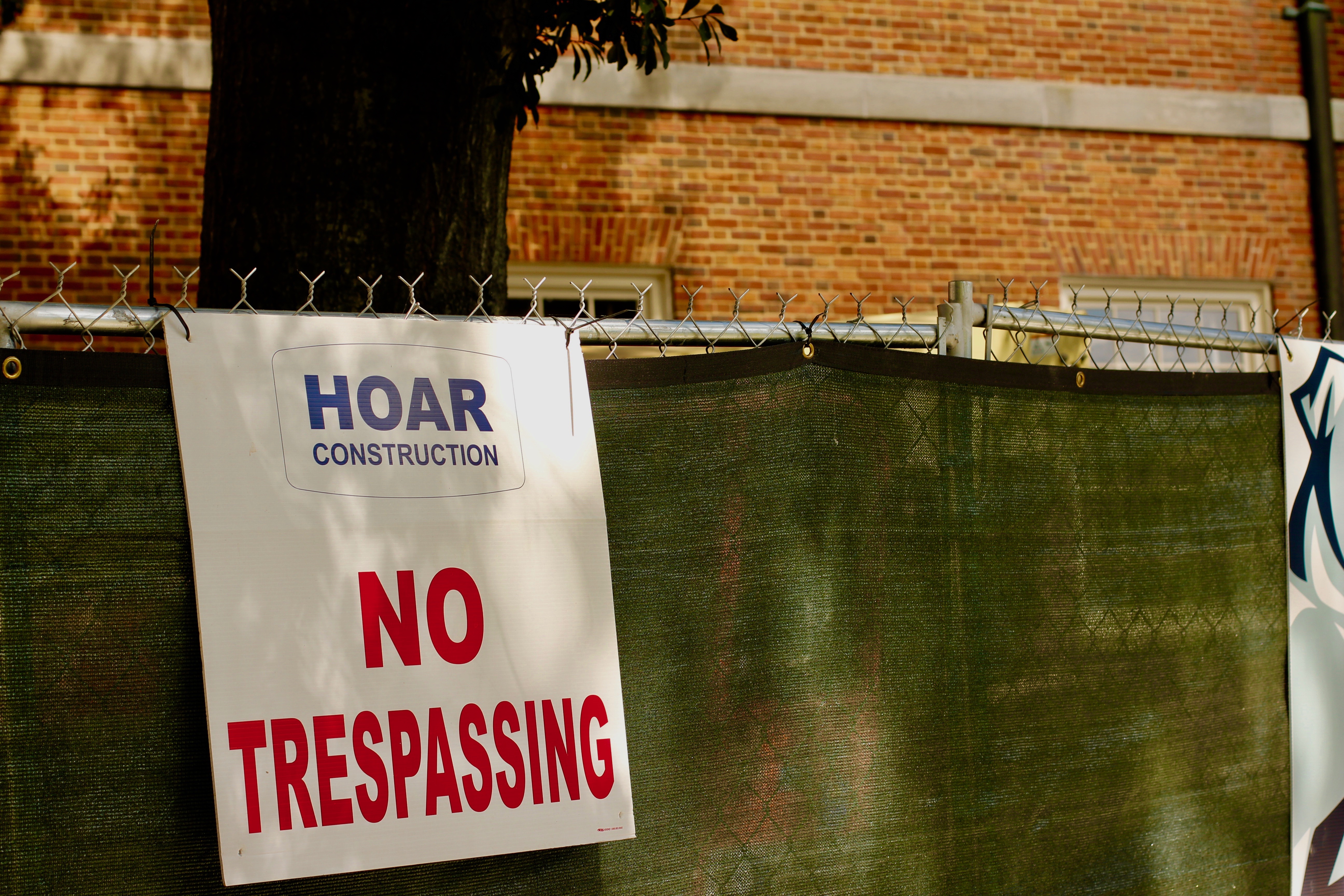Constructed in 2001, the Christenberry Planetarium at Propst Hall has immersed Samford students in outer space for decades. Now under the direction of Don Olive, professor and chair of the physics program, the planetarium sees a range of events throughout the school year.
In spring of 2023, the planetarium put on a handful of shows, including: “Beyond the Telescope,” which featured the little-known accomplishments of early female astronomers, and “Shining Light on Dark Skies,” a presentation on light pollution. Last semester, Olive hosted his annual “Star of Bethlehem” show, a presentation inspired by the magi who visited Jesus in the New Testament.
From Feb. 15-16, the Christenberry Planetarium hosted a show titled “Alabama Winter Skies,” an in-depth presentation on local constellations and space objects visible during this time of year, and how to spot them. It was researched and organized by undergraduate students Caroline Redman, Ana Boatright, Ariana Allgood and Hunter Vinson. Olive helped narrate a portion of the presentation as well.
“This is an entirely student-led show,” said Olive. “They did all of the hard work… I just kinda tried to stay up to date!”
Allgood, a sophomore math and psychology major and head intern at the Christenberry Planetarium, introduced the presentation with an overview of the zodiac constellations, the “Winter Hexagon” and a collection of other recognizable constellations and nebulae.
“I love how encapsulating it is to watch a planetarium show and am so happy to help create these experiences,” said Allgood. “I helped work on the visuals displayed in the planetarium. It’s one of my favorite parts of putting our shows together because I get most of my research inspiration and curiosity from it.”
Boatright, a freshman psychology major, spoke next about the Orion constellation, the Auriga constellation and a selection of nebulae visible during the wintertime.
“Nebulae come in all sorts of shapes, colors, [and] types,” said Boatright. “It’s always interesting to see the composition of a certain nebula and also try to understand where the name for them came from based on its shape and images.”
Olive took over the presentation next, discussing the more obscure nebulae and space objects.
Vinson took over the last section of the presentation, covering the Taurus constellation and the mythology surrounding it. It was her first planetarium show.
“I first really got into astronomy last semester when I took astronomy with Dr. Olive,” Vinson said. “It opened my eyes to a whole new world, and I really just wanted to continue learning about it; that’s why I’m here.”
The show concluded with a few words from Allgood, who led an interactive recap of winter constellations for the audience to test their knowledge. Once the show concluded, the presenters opened the floor for the audience to ask questions and to explore the planetarium.
“I love how friendly everyone is there and how much passion we all have for our projects and shows,” said Boatright. “Getting to learn more about deep space objects for a job is one of the coolest things I could’ve ever done.”

Staff Writer






